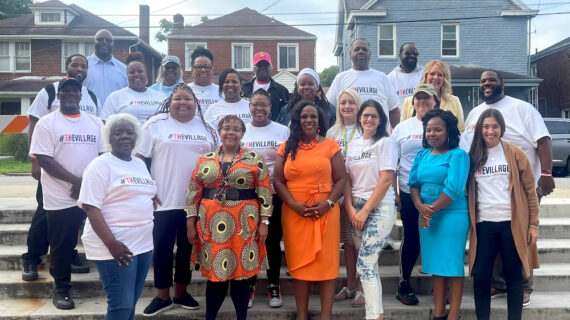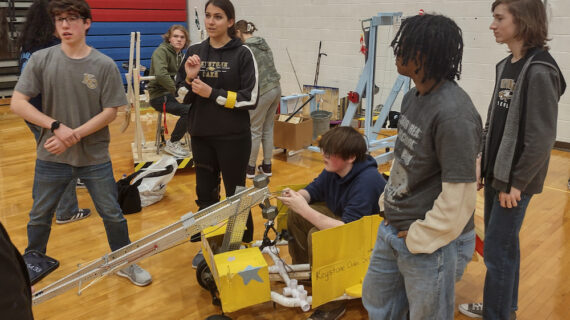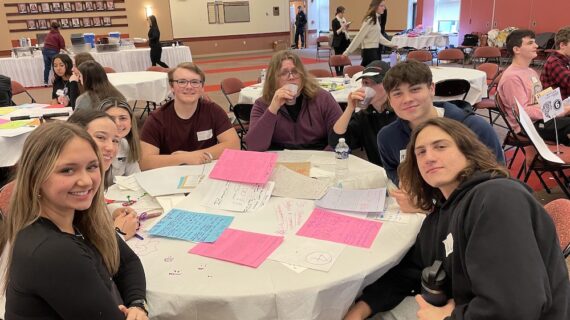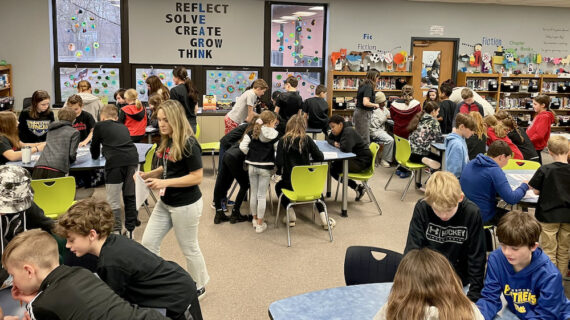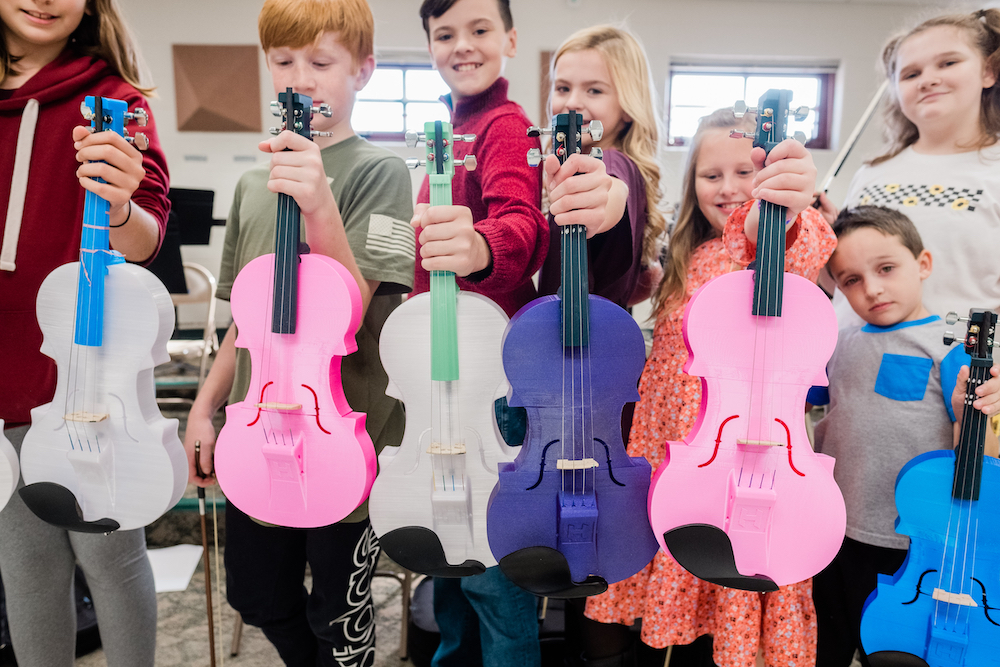
At California Area School District, music is in the air — and students are thriving because of it
This story is one in a series created in collaboration with the AASA Learning 2025 Alliance to celebrate the work of groundbreaking school districts in the Pittsburgh region. Kidsburgh will share these stories throughout 2024.
This story begins with a sentence you don’t often hear: Down in California, they’re printing out violins.
The California in question is California Area School District in Coal Center, Pennsylvania, south of Pittsburgh. And the violins are emerging, bit by bit, from a fleet of 3D printers.
The goal of this innovative project? To give more students in this small, rural school district a frictionless path to participating in the arts — and to learning musical skills that will stay with them for a lifetime.
“I love 3D printing. So that was an easy access point for me with the kids,” says Superintendent Laura Jacob. “A lot of kids don’t get into instruments or music because of the cost of lessons and then the cost of renting the instrument. Some places require a credit check to rent an instrument. And so I think about those families that maybe their credit isn’t that great.”
Music has become very important at California Area in recent years, particularly since the pandemic. Jacob, who stepped in as superintendent in July 2020 when the COVID-19 lockdown was at its height, realized that the upending of just about everything during those days “gave us the liberty to think outside the box.”
“It allowed us to question, ‘Why is it that we’ve had some of our longstanding traditions?’ And I think that we realized, ‘Hey, we can push and we can change things around and focus on things in a different way.’”

Jacob and her team have become known for their efforts at thoughtful innovation, from their Moonshot Grant-funded individualized learning program and animal-assisted learning to their family-school engagement efforts.
The district is part of the Western Pennsylvania Learning 2025 Alliance, a regional cohort of school districts working together — with support from The Grable Foundation — to create student-centered, equity-focused, future-driven schools. Led by local superintendents and AASA, The School Superintendents Association, the Alliance convenes to help districts like California Area do what they do best: give every child the best possible learning experience.
This work includes after-school clubs for every musical interest, including guitar club, orchestra club, and many others, like the beloved Friday afternoon 3D violin club.
MUSICAL OPTIONS THAT WELCOME EVERYONE
Jacob and her team have 3D printed an entire orchestra at the elementary level and they’re working on doing the same for secondary schoolers. But the violins are the heart of this effort.
To be sure, a 3D printed violin isn’t a Stradivarius.
“How it sounds, how it responds, is a bit different,” says music teacher and band director Noah Kilgus. Though loud as their wooden cousins, these extruded instruments are actually easier to tune and far less breakable — an important thing for younger kids who play and don’t want to be afraid of messing up the rental instrument.
“It’s very accessible, which is what music-making should be about,” Kilgus says. “It’s an opportunity for them to just experience and be exposed to music-making, even if it’s not at the highest level. It’s getting them doing something, which is what it’s all about.”

On Fridays at the after-school club, Jacob and Kilgus team-teach their 3D string students. A dedicated group, mostly elementary schoolers, with a few older kids mixed in, arrive every week to practice their instruments and build friendships.
They focus on having fun rather than performance, but Kilgus is clear: Don’t rule out a recital at some point. After all, it’s not every day you get to hear ten students playing “Hot Cross Buns” on plastic violins.
“These students are ones who typically don’t pursue other musical events,” Kilgus says. “They’re the ones who maybe wouldn’t have that opportunity otherwise.”
Everyone is welcome. There’s even an after-school bus that transports kids home when they’re done, so the absence of a ride home isn’t a barrier.
Reviews are positive from the young players. Ninth-grader Allison Piktel had some experience playing a regular violin before getting involved with her custom-made pink and black 3D model.
“It’s actually helped me grow as a violinist,” Allison says. “They ask you what color you want, and they make it for you. It doesn’t sound exactly like an actual violin, but it sounds really close.”
Don’t count out traditional wooden violins at California Area, though. Jacob is considering adding an element in this year’s summer camp where students will learn to make wooden violins. She already has basic templates at the ready.
“When we make them from wood, it’s going to be comparable to actually buying one,” Jacob says. “But the history, the language, the discussions and learning about the woodworking aspect of it and the tonality, there’s so much that we’re going to be able to get into with it that I think is really going to add some depth to learning an instrument.”
Plastic or wood, though, the song remains the same: one of deep commitment to giving kids access to music-making tools in a bid to unleash their creativity and see what skill and beauty can come of the effort.
“I’m not trying to teach kids to be luthiers,” Jacob says. “I’m just trying to show the breadth of careers and skills and things that kids can get into that can open up their world to different possibilities.”
Want to download this story? Click here for a PDF.


